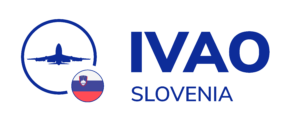Rules and regulations
Similar to Special Operations being an integral part of real world aviation, it is also an integral part of IVAO and its aviation simulation. In order for Special Operations to have its place in the virtual skies of IVAO and due to its nature, the Special Operations Department (SOD) has been established to regulate the use of Special Operations on the IVAO network environment.
Special operations are a very sensible domain and are subject to several rules and regulations, both international and divisional.
International Rules
The international part of the regulations is set in the “SO Directive”. All rules written there apply to all special operations in the world. You can find the directive here : SO Directive. We would like to ask you to take a close look at these rules before continuing.
Summary
For clarity purposes, all possible Special Operations activities are being classed into different Special Operations categories, ranging from Category A through Category E. Special operations flights can be flown as OAT (operational air traffic) only in restricted and segregated areas and if a military ATC is present, according to the divisional regulations (see below). Otherwise, they have to follow GAT rules at all time.
Divisional Special Ops Information
Slovenian Division Letter of Agreement
| SPEED LIMITS | |
| GND – FL100 | 250 IAS |
| FL100 – FL370 | M0.9 |
| FL370 – UNL | UNRESTRICTED |
Operational Requirements
When flying OAT pilots are obliged follow these rules:
- Military radar shall always be online and pilots are obliged to be in contact with the station and follow given instructions at all time.
- Whenever military radar is not online, pilots shall continue as GAT traffic which impel them to contact civilian ATC station.
- Operational Air Traffic are only allowed to operate in the following zones: LJR4, LJR5, LJR6 and TSA NATO
- During planning phase pilots shall always indicate in the flight plan (RMK/OAT) and type (MILITARY/M) at all times.
- At all time pilots must follow separation rules with GAT: 5 mn horizontally and 2000 ft vertically.
Intercepting Civil Aircraft
Pilots wishing to intercept another civil aircraft, shall adhere to the following rules:
- Interceptions are prohibited unless prior approval is obtained from SI-FOC.
- Interceptions shall be discontinued immediately on request by any concerning party involved mentioned above.
- During interception some of the operational restrictions might be disregarded such as speed limit.
- Interceptions are only to be carried out until the FIR boundary unless agreed with concerning divisions.
Military Training Areas
In airspace classes “C” and “D” (TA 1C, TA 1D, TA 2C, TA 2D, TA 3C in TA 3D) ATC will also provide information regarding activities in training areas and provide either:
- vectoring around the area.
- descend clearance to fly below the area, whichever is more appropriate in regard to traffic situation and flight trajectory.
In airspace class “E” (TA 1E and TA 2E) ATS will also provide information regarding activities in training areas and:
- issue clearances to overfly the area for IFR flights and when applicable provide traffic information for VFR flights.
Restricted Areas LJR4/5/6A/6B/6C Danger Areas LJD1/2 are delegated for Air exercise:
- Activation and relevant Upper limit will be announced by NOTAM
Military Air Traffic Control
Only validated Controllers by the Slovenia Special Operations Department are allowed to open any Military-Only frequency as follows:
Ljubljana Military / Information – LJLA M CTR
- Control & Reporting Center Spider – Slovenian Military (120.625 – LJLA_M_CTR) is the military area control center. It covers the whole Slovenian FIR for military traffic, as well as military airports where no local controller is online. If Ljubljana Information (LJLA_FSS) is not online, it provides flight information service to uncontrolled civil aircraft’s as well. It is also responsible for activation of military areas.
Military Airbases
Cerklje ob Krki Airbase (LJCE) – is the only military airport in Slovenia. The Air Force Military School is located at the Cerklje ob Krki air base. The school conducts the basic and advance training programmes for future air force pilots in two Zlin 142L and eight Zlin 242L planes and four Bell 206 Jet Ranger helicopters, organises practices for air force pilots, provides fire support, and carries out various tasks for other branches of the armed forces by using the two PC-9 and nine PC-9M planes. A part of the Air Force Military School is also the parachute squad, located at the Brnik air base, which organises basic and advanced parachute training for SAF members.
Ljubljana-Brnik Airbase (LJLJ) – is located at Ljubljana international airport and part of the apron is used for military activity. The 15 Helicopter Battalion is located at the Brnik air base. The unit is equipped with eight Bell 412 multipurpose helicopters and four AS-532 Cougar multipurpose support helicopters. The unit’s main duties are to organise training courses for pilots and technical staff, to organise search and rescue missions and operate within the System of Civil Protection, Help and Rescue, to secure cargo transportation to mountain areas, to extinguish fires, and to provide air support for SAF units. The unit is under direct command of the SAF Force Command. The Air Force Base operates as part of the SAF logistic support at the Force Support Command. The aircraft are normally based at Brnik.
